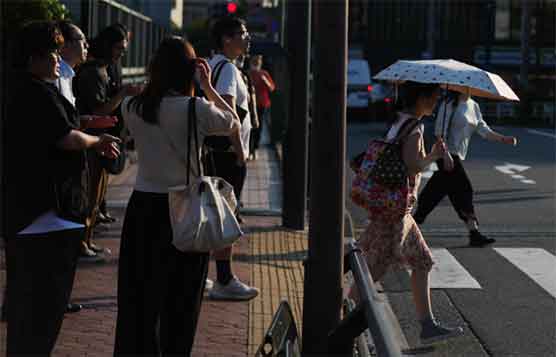
Japan’s 2025 summer averaged 2.36°C above normal—its hottest since 1898. With 41.8°C highs and 84k+ heat-related hospital visits, it’s a stark climate and public health crisis.
Tokyo, Sept. 16 – Japan has just survived a summer for the history books—and not in a good way. The Japan Meteorological Agency (JMA) officially confirmed this week that the 2025 summer (June-August) was the hottest since record-keeping began in 1898, blowing past the previous highs set in 2023 and 2024. This isn’t a fluke; it’s a sledgehammer reminder of how climate change is rewriting global weather rules.
JMA Data: A “Staggering” Heat Milestone
Let’s talk numbers—because they’re impossible to ignore. The average summer temperature clocked in 2.36°C above the 30-year normal, a jump that dwarfs the 1.76°C anomalies of the past two years . July was the worst offender, spiking 2.89°C above average, while June hit a 2.34°C high—both monthly records . Even August, at 1.84°C above normal, ranked second-hottest ever.
The extremes were jaw-dropping. Isesaki City in Gunma Prefecture roasted at 41.8°C on August 5, the highest temperature Japan has ever recorded . For context, that’s hotter than the average summer day in Phoenix, Arizona. Across the country, 132 out of 153 weather stations logged their hottest summers on record . “This isn’t just warm—it’s unprecedented,” a JMA spokesperson told reporters, citing a north-shifted jet stream that funneled blistering air into the country.
From Hospitals to Grocery Stores: Heat’s Double Punch
The heat didn’t just make commutes miserable—it put lives at risk. By August 24, Japan’s Fire and Disaster Management Agency reported 84,521 heat-related hospital visits, edging past last year’s 83,414 . For low-income families already stretched thin, the crisis deepened: a Tokyo survey found households spent 9% more on cooling this summer, with 62.5% of lower-income families stressing over the costs . It’s a cruel cycle—skimp on AC to save cash, and risk heatstroke.
Then there’s the grocery bill. Drought (some regions got just 8% of normal July rain ) baked rice fields in Niigata, Japan’s top rice-growing prefecture, threatening harvests and hiking prices . Tomatoes cost 10% more, sweet peppers 30%, and pork hit a 50-year high . Even farmed fish got hit—warmer oceans made yellowtail prices surge 50-60% . “We’re feeling it at every meal,” a Tokyo food vendor told local media.
Global Heatwave: Japan’s Crisis Isn’t Isolated
Here’s the kicker: Japan’s misery is part of a global pattern. This summer, the U.S. Southwest sweltered through 120°F (48.9°C) days, southern Europe battled wildfires, and Korea also logged its hottest summer on record . It’s like the planet’s thermostat is stuck on “high,” and scientists say human-caused climate change is twisting the dial.
The World Health Organization warns that for every 1°C above 20°C, labor productivity drops 2-3% —a blow to Japan’s workforce already grappling with an aging population. On social media, #HeatCrisis trended as users shared survival tips, from cooling towels to free public misting stations. It’s a reminder that climate change doesn’t respect borders—and neither should our response.
As Japan heads into fall, the JMA’s data lingers like the sticky humidity. This wasn’t just a hot summer; it was a test—and we’re all failing it. If 2025 is the new normal, the world needs to wake up fast. Because next year could be even hotter.
